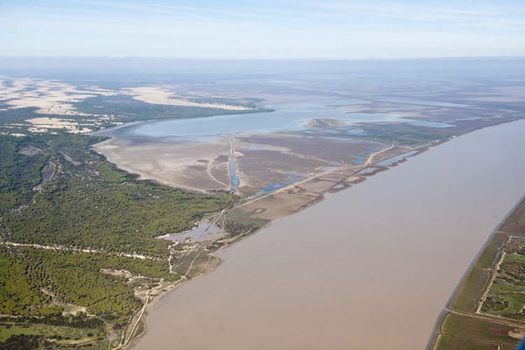Mediterranean temporary ponds on Doñana's aeolian sands form an extensive system of small dynamic water bodies, dependent on precipitation and groundwater, of considerable importance for biodiversity conservation. Different areas of the aeolian sands have received different levels of environmental protection since 1969, and this has influenced the degree of conservation and the flooding dynamic of these temporary surface waters. The Landsat series of satellite images from 1985 to 2014 was used to study the temporal dynamic of small temporary water bodies on the aeolian sands in relation to the protection level and to distance to water abstraction pressures from agriculture and residential areas. The results show that even with small and ephemeral water bodies optical remote sensing time-series are an effective way to study their flooding temporal dynamics. The protected areas of the aeolian sands hold a better preserved system of temporary ponds, with a flooding dynamic that fluctuates with precipitation. The unprotected area shows an increase in mean hydroperiod duration, and surface flooded, and a decline in hydroperiod variability. This seems to be due to the creation of irrigation ponds and the artificialization of the flooding regime of the natural temporary ponds, which either receive excess irrigation water or dry-up due to the lowering of the groundwater table level. Although a decline in hydroperiod duration of temporary ponds is seen as negative to the system, an increase in hydroperiod of surface waters due to artificialization, or a decline in variability cannot be considered as positive compensatory effects. informacion[at]ebd.csic.es: Bustamante et al (2016) Effect of protection level in the hydroperiod of water bodies on Doñana's aeolian sands. Remote Sens doi:10.3390/rs8100867
http://www.mdpi.com/2072-4292/8/10/867/html

 Las altas temperaturas están provocando que las lagunas y las marismas de Doñana pierdan agua rápidamente
Las altas temperaturas están provocando que las lagunas y las marismas de Doñana pierdan agua rápidamente




